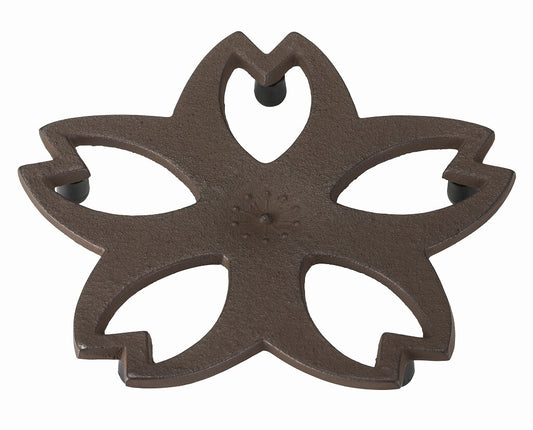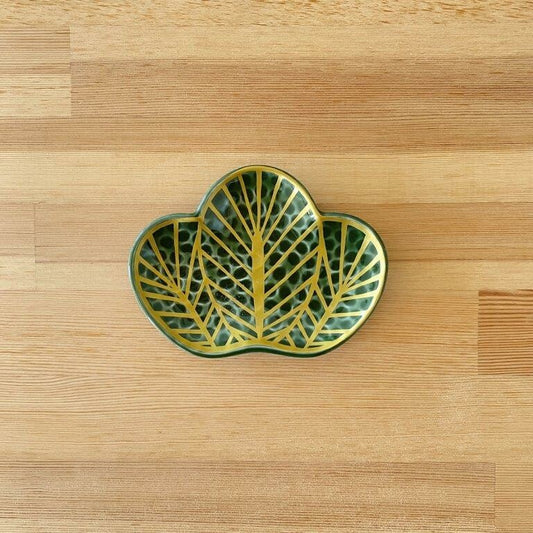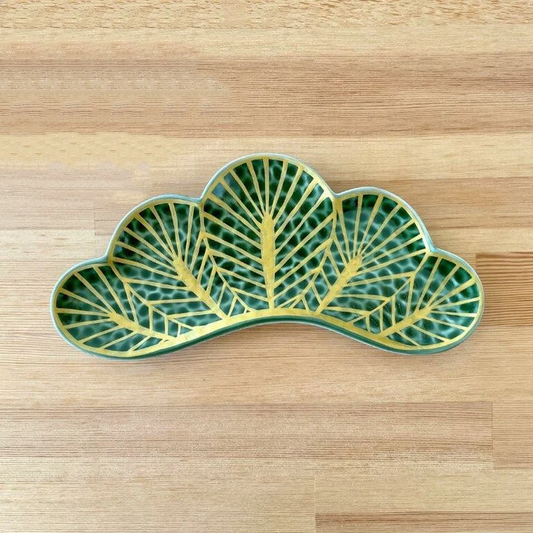What is a Folding Fan(扇子, “Sensu”)?
As the name implies, a folding fan, or “sensu”, is a tool that can be folded up or opened and used as a fan. It is also commonly used in ceremonial events and performing arts. The sensu is said to have been invented in Japan, and in ancient times, it was called an “ōgi”(扇).
The sensu consists of a few to several dozen thin, elongated bamboo or wooden ribs, which are bound together at a single point (called the 'kaname' or pivot). This allows for the fan to be folded and unfolded. The ribs are usually covered with paper, and when unfolded, the it forms a single, tiered surface. The fan's opening angle typically ranges from about 90 degrees to 180 degrees, with the most common being around 120 degrees, which is about a third of a circle. The fan becomes compact when folded, and can be neatly stored away.
History of the Folding Fan
There are records indicating that the “uchiwa” (団扇, non-folding fan), which is the prototype of the “sensu” (folding fan), was used in China during the BC era. Ancient Egyptian wall paintings also show a king surrounded by his attendants holding up a huge feather fan.
In Japan, there are examples of fan handles being excavated from Yayoi period archaeological sites. Thus, uchiwa have existed since the dawn of civilization. It is believed that the uchiwa was invented within Chinese civilization and was spread throughout various parts of East Asia during the Sui and Tang dynasties.
The original folding fan was called a “hisen” (檜扇, Japanese cypress fan), which was made by stacking thin cypress boards approximately 1 inch wide and 12 inches long. These fans have been excavated from ruins from the Nara period (710-794). Hisen are said to have been used by male nobles as an informal substitute for a “shaku” (笏)—a slender wooden board held in the right hand during formal occasions. It is also said that these hisen were used as memo pads to jot down the complex etiquette of the imperial court.
Over time, the decorative nature of hisen increased, with the pivot material changing from paper to wood and being reinforced with ornamental metal fittings. As these fans began to feature painted designs, they became popular among women at the imperial court as decorative items. The hisen held by women were called “akomeōgi” (袙扇), and besides being ornamental, they were also used to quickly shield themselves from others' gazes.

By the mid-Heian period, a type of fan called kawahori-ōgi (蝙蝠扇) emerged as a summer fan, made by attaching paper to five or six thin ribs. It was named after bats (蝙蝠, kōmori), as the fan's appearance when opened resembled bat wings.
This fan is considered the prototype of the modern sensu (扇子, folding fan). However, during this time, the paper-covered fans were made with the ribs exposed on the back side (it wasn’t until after the Muromachi period that the style of covering both sides of the ribs with paper became widespread).
In the Heian period, fans were not only used for fanning but also served as tools for rituals, gifts, and communication. For instance, it was common to write waka poems on fans and present them as gifts, or to place flowers on fans and offer them to others—these practices are recorded in many literary works and historical documents, such as “The Tale of Genji”. Thus, while fans were used for cooling and play, but over time, they also became ceremonial objects as well. Regardless of social status—whether among the nobility, samurai, or common people—fans became essential items in both daily life and ceremonies such as weddings and funerals.
By the Kamakura and Muromachi periods, sensu were also used by military commanders on the battlefield to direct their troops. Iron fans, known as “tessen” (鉄扇), had ribs made of iron and often featured sun or moon designs on the fan surface. These fans were also carried as self-defense tools. Among the samurai class, these fans were considered as important as swords and were highly valued.
During this era, sensu also became indispensable props in performing arts such as Noh, Kabuki, and dance, as well as in traditional practices like tea ceremonies and incense ceremonies. The use of fans was originally exclusive to nobles and priests, but over time it gradually spread to the common people.
In the 16th century, trades with Portugal had begun and sensu started being exported to Europe. This led to the creation of unique European fans. These luxurious fans often used materials such as metal, ivory, and tortoiseshell for the ribs, and featured both sides covered with fabric, silk, lace, or peacock feathers. They became a major trend among the upper-class women in Spain, France, and other European aristocracies.
In the Edo period, a new style of fan known as the "Edo sensu"(江戸扇子) emerged, characterized by its thick ribs and wide folds. This style contrasted with the Kyoto sensu(京都扇子), which was made by connecting multiple thin ribs. While Kyoto sensu were crafted through a division of labor among many artisans, Edo sensu were typically made entirely by a single craftsman.
Types of Folding Fan (Sensu):
There are several types of sensu depending on their use. Here are some of the main types:
Summer Sensu (夏扇子, Natsu Sensu)

Summer sensu refers to paper or fabric fans used during the summer. The primary purpose of a summer sensu is to provide a cool breeze by fanning oneself. Generally, when people mention a sensu, they are often referring to a summer sensu. It's worth noting that while paper fans are called natsu-ōgi (夏扇, summer fans), wooden fans made from hinoki wood are sometimes referred to as fuyu-ōgi (冬扇, winter fans).
Decorative Sensu (飾り扇子, Kazari Sensu)

Decorative sensu are fans used as interior decorations, commonly displayed in homes or stores. These fans are usually showcased in an open position, propped up for display. Unlike summer sensu, they are not used for fanning. The fan surfaces often feature seasonal designs or motifs of good fortune, making them popular as gifts as well.
Dance Sensu (舞扇子, Mai Sensu)

The dance sensu, also known as mai-ōgi (舞扇), is a fan used in traditional Japanese dance, such as Nihon Buyo. These fans often feature vibrant designs in gold and silver to stand out on stage, with identical patterns on both sides. Some dance sensu are constructed with thicker ribs than typical fans, making them more durable to withstand the demands of performance.
Shimai-sen (仕舞扇, Shimai-sen or Shimai Ōgi)
Shimai-sen, also known as shimai-ōgi (仕舞扇), refers to fans used in traditional Japanese performing arts, such as Noh and Kyogen. The size, color, and patterns of a shimai-sen can vary depending on the role being performed or the specific school of performance.
Shūgi-sen (祝儀扇)
A shūgi-sen is a fan used as an accessory in formal kimono attire during ceremonial occasions. The fan's shape, which widens at the end, symbolizes success, making it a popular item at high-profile celebrations, such as weddings. Typically, a shūgi-sen features black-lacquered main ribs and a fan surface adorned with gold and silver.
Tea Sensu (茶扇子)
A tea sensu is a fan used in the tea ceremony. It serves as a small prop to convey respect and etiquette, playing a significant role in the ritual. A tea sensu is usually smaller than a summer sensu and is used in its closed state during the tea ceremony.
Games Using Sensu:
One traditional Japanese game that uses sensu is tōsenkyō (投扇興). The origins of tōsenkyō trace back to mid-Edo period Kyoto, around the second year of the An'ei era (1773), and it quickly spread among the common people. It is said to have been enjoyed by a wide range of people, from children to adults.
Tōsenkyō is a competitive game where players throw a sensu at a target called a "chō" (butterfly) placed on a wooden box. The score is determined by the configuration created by the sensu, the "chō", and the stand after the throw.
After the sensu is thrown, it may hit the butterfly, causing it to fall or shift, or the sensu may land on top of the butterfly, creating various patterns. Each pattern has a specific point value, and players compete by tallying their total scores.
Today, there are several tōsenkyō organizations, continuously innovating on the rules and format of the game, preserving the tradition.






